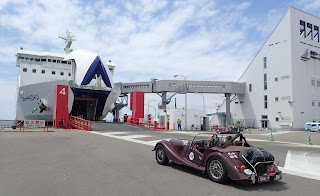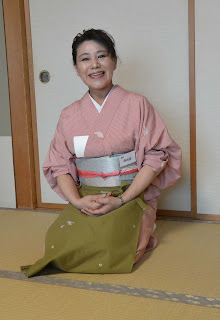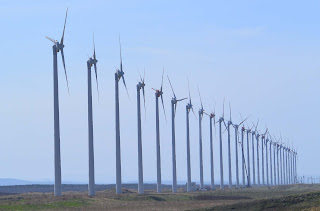Monday 15th May 2017
Mito to Tokyo
Tokyo to Yokohama
We did a total repack of the car this morning before we left the hotel at Mito. We had to decide what to leave with the car and what we would take with us.
Due to the distance done yesterday we were going to be in Yokohama earlier than planned. As the shipping agent couldn't meet us earlier we decided to drive into Tokyo and drop our luggage at the hotel. We only missed one turn which, thankfully, wasn't too much of a problem, took our luggage into the hotel and made our way to Yokohama.
The GPS showing a very large intersection
We met the agent and followed her to the shipping warehouse to drop off Puce Goose.
So after 9,858kms on the road we farewelled the trusty Morgan as she departs on her (probably) last sea journey.
It is now Sayonara from us and hope to see you all soon.
Mito to Tokyo
Tokyo to Yokohama
We did a total repack of the car this morning before we left the hotel at Mito. We had to decide what to leave with the car and what we would take with us.
Due to the distance done yesterday we were going to be in Yokohama earlier than planned. As the shipping agent couldn't meet us earlier we decided to drive into Tokyo and drop our luggage at the hotel. We only missed one turn which, thankfully, wasn't too much of a problem, took our luggage into the hotel and made our way to Yokohama.
The GPS showing a very large intersection
We met the agent and followed her to the shipping warehouse to drop off Puce Goose.
So after 9,858kms on the road we farewelled the trusty Morgan as she departs on her (probably) last sea journey.
It is now Sayonara from us and hope to see you all soon.




























































